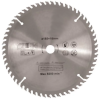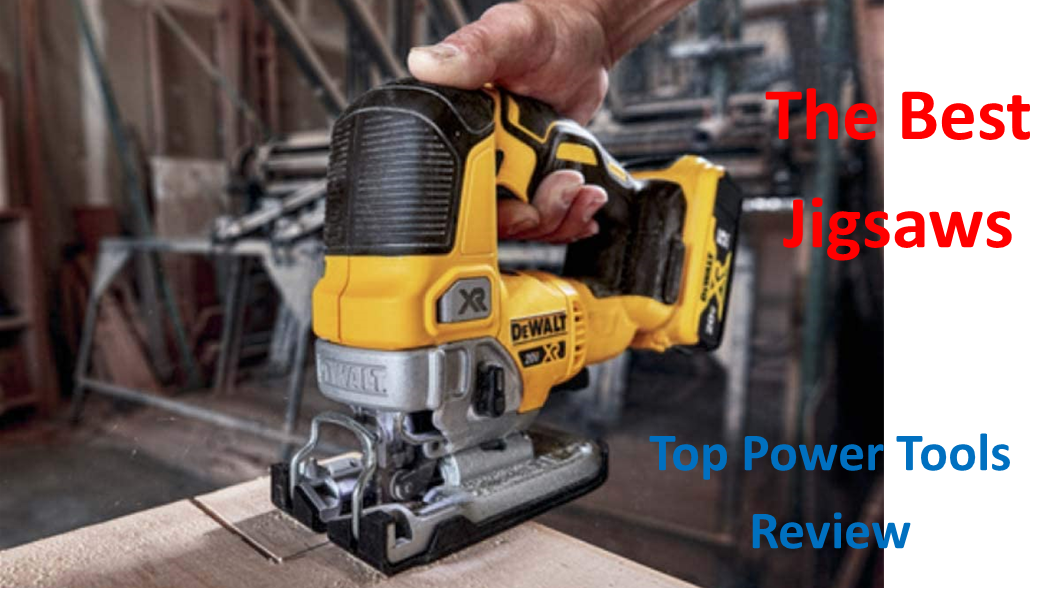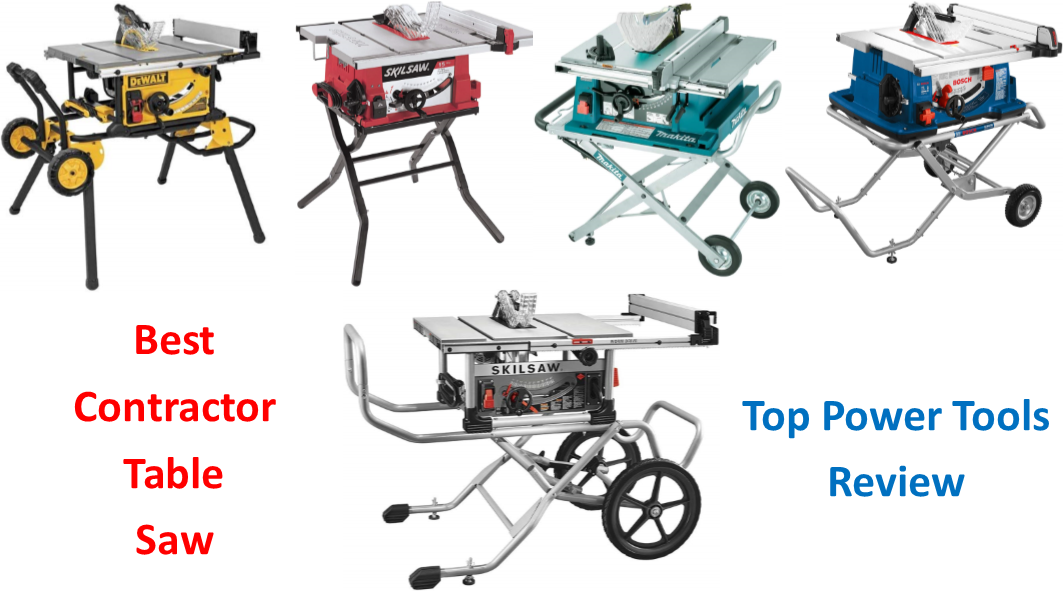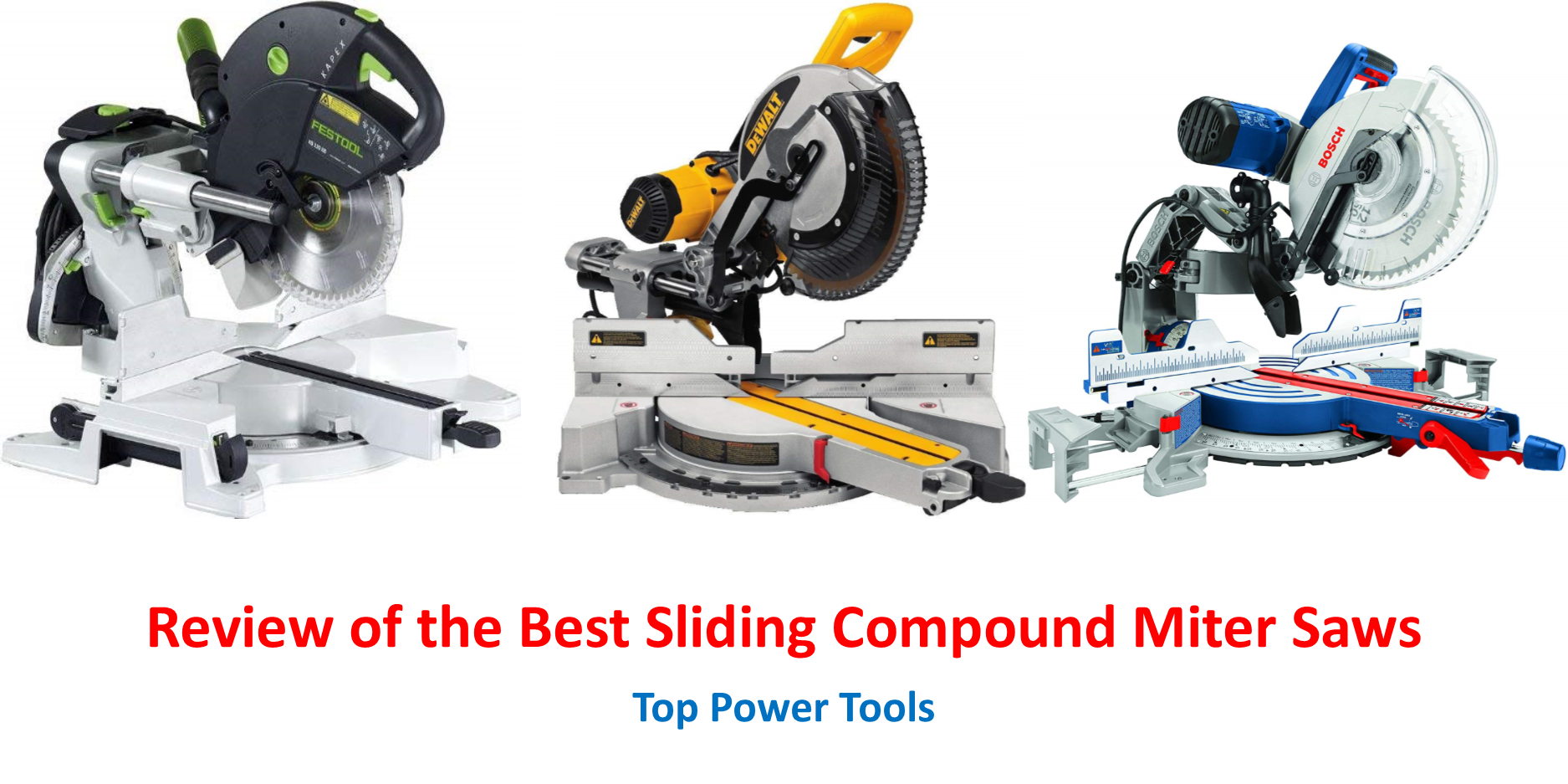Benchtop, or thickness planers aren’t too common in the average shop. If you own one, or intend buying a thickness planer, you’re obviously serious about your woodwork projects. These power tools are invaluable when it comes crafting furniture and cabinetry.
No professional woodworking shop can function efficiently without a high-grade thickness planer. The intrepid hobbyist will undoubtedly seek out a quality benchtop planer too. If you require precision squaring and perfectly flat pieces for joinery, this is an essential tool for your shop. Simplify the process when creating tabletops and squaring multiple pieces to the same size for supports and table legs.
There are many factors that will affect your decision when buying the best thickness planer for your shop. Hardwoods, like maple or oak, need more power than working with softwoods, like pine. Capacity and speed will also be something to consider. If you’re buying your first benchtop planer, you will benefit from the buying guide, following the planer reviews.
Since most of you are probably here to find the best thickness planer, let’s take a look at what to expect from this review. Here’s a brief description of the models chosen. After some extensive research, our shortlist of the best thickness planers covers all bases. Each model has something outstanding to offer, depending on your requirements.
DeWalt DW735X: Top Choice for the best all-rounder – powerful 15A motor (20,000 RPM); 3-knife cutter head; extra sturdy 19¾” cast aluminum table; includes extra-length (33½”) infeed and outfeed tables.
Craftsman CMEW320: Best Affordable Benchtop Planer for the home shop – 15A motor (8,000 RPM); 2-knife cutter; built-in infeed and outfeed tables.
Makita 2012NB: Best Compact 12” Benchtop Planer – 15A motor (8,500 RPM); 2-knife cutter; best in class thickness capacity – 6³⁄₃₂”; heavy-duty infeed and outfeed tables.
JET JWP-208HH: Top Professional Grade High-Capacity Planer – Industrial-grade 5HP motor (230V/27A); Helical cutter with 92 X 4-sided cutting inserts; 20” width and 8” thickness capacity; heavy-duty cast iron and steel construction.
Best Thickness Planer Review
Four different models, each with their own specific advantages, this is what I’m presenting as the top thickness planers for this review. There are three, fairly compact, benchtop planers and one full-size freestanding model (JET JWP208HH) for those who require more power and greater capacity.
DeWalt DW735X 13” Thickness Planer
Features:
- Powerful 15 amp, 20,000 rpm motor (10,000 rpm cutterhead speed)
- Two-speed gear box, optimizing cuts per inch at 96 or 179 CPI
- 19¾ in. cast aluminum base
- Three knife cutter head delivers 30% longer knife life
- Fan-assisted chip ejection vacuums woodchips off of the cutter head and exhausts them out of the machine
- Automatic carriage lock
- Extra-large turret depth-stop allows users to return to most frequently used thicknesses with ease
Review:
Once again, DeWalt tops the list as my favorite. Regular readers of Top Power Tools reviews may be asking why DeWalt is so often my number one brand? For the record, I’m not a DeWalt salesman. I simply love their tools. This is an opinion shared by many. Read just about any thickness planer review, or check the best-seller lists, and you’ll probably find the DeWalt DW735X topping the charts. To put it plainly, this is an incredible machine and DeWalt has an uncanny knack of knowing exactly which features are important to us. They go the extra mile in ensuring that the simple details, that make for a blissfully easy to use tool, are taken care of.
The reasons for considering the DeWalt DW735X above all others are plentiful. Yes, there are a bunch of amazing options, so let me explain why this one is special. At least, in the opinion of this humble writer. The first thing that truly wowed me is the super amazing base, almost 20” thick. That’s about twice as thick as one would normally find on a benchtop thickness planer. This makes it incredibly ridged. They’ve taken a similar approach with the infeed and outfeed tables. Both are much longer than the norm (33½”). These fit securely to the machine, providing excellent stability. In ensuring that the tables remain perfectly stable, they’ve had to do away with some of convenient niceties. The tables don’t simply fold away. They screw onto the body, so it takes a little longer to fit and remove the infeed and outfeed tables. I think this is a good call. The extra stability is more important than saving a minute or two when setting up the DeWalt planer.
The four-column carriage lock is absolutely amazing, in both design and function. It’s super strong, minutely accurate and the 4-column design is the best way of ensuring a stable platform with balanced force. It keeps the board perfectly flat against the base as you work. The automatic carriage lock drastically reduces the chance of snipe. A large depth adjustment wheel, also perfectly engineered and tough, allows for quick accurate settings. With oversized markings, you can’t go wrong. An extra-large turret depth stop saves a lot of time when selecting common thickness settings. The material removal gauge is equally great. The DeWalt DW735X has a maximum removal capacity of ¹⁄₈”, a width capacity of 13”, and can handle pieces up to 6” thick. That’s pretty much the best you can expect from a compact benchtop planer.
A large switch on the front panel, allows you to quickly change between two speed settings. The immaculately designed DeWalt gearbox takes care of the rest, providing either 96 CPM or 179 CPM. It also has a huge red safety emergency stop switch easily visible and quick to engage when needed. The three knife cutting head is one of the best I’ve seen. No noticeable scallop and the knives last longer. With the additional advantage of double-sided blades. Maximum speed at the cutter is 10,000 RPM (20,000 RPM motor speed).
Something that I consider a bonus feature, and a really useful one at that, is the chip blower. A fan sucks wood chips out of the cutting head, blowing them out the back. This works way better than using just the power of a vacuum extractor. At the back, you can use the vacuum hose adapter, for complete dust extraction, or a cowling attachment that forces the wood chips down after being sucked away. A great convenience if you don’t have a vacuum extractor on site.
The DeWalt DW735X weighs 92-pounds which has its pros and cons. Carrying the machine is no fun but all that weight contributes to stability, which is a good thing. Two large handles at the top make it easier to carry. It is a portable benchtop planer, albeit on the heavy side. A stand is available as an option, though the DeWalt DW7350 planer stand will set you back almost $150. It is a great stand and well worth the extra investment if you’d prefer to use a mobile stand for the planer. The DW7350 planer stand has wheels, making it easy to move.
Yet another amazing product from an amazing brand. I’ll make no bones about it, I love DeWalt power tools. Beyond this, I believe that there can be no better benchtop planer than the DeWalt DW735X. It’s wonderfully practical, an absolute pleasure to use, and produces sublime results. A winner on all fronts. I have, for the longest time, really appreciated the DeWalt 3-year warranty, 90-day guarantee, with a 1-year free service plan thrown in to sweeten deal.
Craftsman CMEW320 15A Benchtop Planer
Features:
- HARD AND SOFT WOOD MATERIAL REMOVAL: 15 Amp motor provides power for both hard and soft wood material removal
- MAXIMUM STOCK REMOVAL: Poly-V Cutterhead drive for maximum stock removal
- SMOOTH OPERATION: Two knife, quick change, solid steel cutter head mounted on ball bearings, assures smooth operation and long life
- LONG CUTTING LIFE: High carbon steel, double edged, reversible knives for long cutting life
- CLEANER WORKSPACE: Vacuum port for dust collection
Review:
While I consider the Craftsman CMEW320 to be more of a DIY benchtop planer, it has all the features and power that one expects from the big boys, like DeWalt or Makita. It is, however, not as robust as the more expensive benchtop planers, nor is it quite as stable. The craftsman thickness planer may a cost a bit more than the really cheap machines, but I think it’s worth it. There really is no point in buying a power tool like this, if it’s not up to scratch. They need to be accurate and remain that way for a long time. For its price, the Craftsman CMEW320 is probably as close as you’ll get to a truly professional-grade benchtop thickness planer.
I like the powerful 15A motor. For a 12” benchtop planer this is more than satisfactory and the Craftsman CMEW320 can handle most hardwoods without laboring. The 8,000 RPM is a little less than I’d have wanted, especially for a 2-blade cutter head. This provides 16,000 Cuts per Minute. Compared to the top-dogs, this may not be all that impressive. On the other hand, it is great for a machine of this caliber.
Setting the depth is easy enough. A large handle at the top moves smoothly and adjusts the 4-column carriage with a high level of accuracy. I don’t like that this handle is plastic. It juts out beyond the edge and can be prone to damage, if you’re not careful. It has a conveniently placed emergency off switch, a necessary safety feature on a machine like this.
The base is perfectly flat, thick, and solid. I don’t have any tech specs in this regard, but it looks like a 10” aluminum base to me. It’s polished to perfection and as smooth as glass. Really great. The infeed tables don’t get much praise from me. It’s great to see these on a machine that isn’t at all expensive, but they are not that strong and could be a little bigger.
For easy portability, the Craftsman CMEW320 is a real winner. At just under 62-pounds, with a strong bar across the top for carrying the machine, it’s one of the easiest to move around. Though this lower weight is an indication that the Craftsman planer is not exactly heavy-duty. A heavier benchtop planer also offers better stability when feeding longer boards through the cutting head.
Comparing the Craftsman CMEW320 12” benchtop planer to any in the under $350 price range, it is my definite favorite. The Craftsman brand is synonymous with good quality at affordable prices. This is exactly how I see the Craftsman CMEW320. The price is truly fantastic for what you’re getting.
Makita 2012NB 12” Thickness Planer
Features:
- Low noise (83dB) for operator comfort
- 4-post design and diagonal cross supports for stability
- Large table extensions to support the workpiece
- Fully adjustable depth stop for repeat cuts
- Powerful 15.0 AMP motor for improved performance
- Double edge planer blades
- Easily adjustable cutting depth for precision planing
- Detachable toolbox for storage of the standard equipment
- Optional dust hood enables dust collection system to be connected to planer
Review:
Makita power tools always leave me awestruck. I can think of few things as beautiful as pure engineering magnificence. When a power tool, as sophisticated as a thickness planer, is not only built for perfect precision but also to last a lifetime, that deserves admiration. At a glance, we can immediately see that the Makita 2012NB is a superior machine. Hidden beneath the all-metal exterior is some of the finest engineering I’ve seen.
All the specs are in line with expectations when seeking out a top-grade 12” benchtop planer. The material thickness capacity exceeds these expectations, at 6³⁄₃₂”. The 12” X 30³⁄₈” table is as solid as they come and machined to perfection. Only the DeWalt DW735X can rival this table. The same goes for the impeccable infeed and outfeed tables.
The Makita 15A motor can take on any challenge, I doubt even Walnut would cause this baby to skip a beat. With a maximum speed of 8,500RPM, the 2-knife cutter head works incredibly well, leaving a clean scallop-free surface. These blades are super-tough and reversible, for great performance and extra-long usable lifespan.
Depth adjustment is a breeze, using a solid metal handle positioned at the top of cutter head. It has large markings and a fully adjustable depth stop for hassle-free repeat cuts. The design of the 4-post carriage has me truly amazed. This is the thing that I greatly admire about Makita tools. Extra effort has been taken to ensure that this planer remains 100% reliable and accurate, year after year. The columns are immaculate, and a diagonal brace has been fitted to keep the perfectly in position, regardless of how hard this machine has to work. The Interna-Lok automatic carriage lock, designed to eliminate snipe, is also about the best I’ve seen. Another thing that caught my fancy was the chain drive system. Many modern machines use a V-belt, but nothing beats the old-fashioned indestructible durability of a metal chain.
I’m surprised to see that one of the toughest benchtop planers is not all that heavy. The Makita 2012NB weighs 61.9 LBS. I guess the use of mainly aluminum, which isn’t cheap, has helped keep the weight down, whilst maintaining the durability standard that is so typically Makita. Super strong handles, molded into the metal bulkhead, make it easy enough to carry. They’ve included an onboard toolbox which is a wonderful idea and truly convenient. If you want the best dust extraction, however, you’ll need to pay extra. A dust extraction hood is available as an optional extra.
While I really admire some of finer details in the design of the DeWalt DW735X, the Makita 2012NB deserves first prize for indestructible durability. Makita service can rival any of the best and the 3-year warranty is also amazing.
JET JWP-208HH 20” Thickness Planer
Features:
- SUPERIOR FINISH AND QUIETER CUT: Helical cutterhead with 92 indexable carbide inserts.
- STRENGTH AND DURABILITY: Heavy-duty cast iron and steel construction.
- CONSISTENT POWER: 5-HP TEFC induction motor with three V-belt transmission.
- QUICK AND ACCURATE TABLE ADJUSTMENTS: Large handwheel with positive gear drive.
- ADJUST FEED RATE TO MEET YOUR NEEDS: Two-speed gear box with automatic chain tensioner.
Review:
Compared to the other thickness planers reviewed here, the Jet JWP-208HH is an entirely different beast. If you’re after a benchtop planer to use on a jobsite, or in your garage, this one won’t be a very practical solution. The Jet JWP-208HH is more like the type of thing you’d find in a commercial woodworking shop. It’s a large heavy machine with a huge capacity – 20” width and 8” thickness. It also requires a 30A 230V power supply.
Being in a completely different league to the average home or jobsite thickness planer, the industrial grade Jet JWP-208HH is also a lot more expensive. For this level of top-quality professional machine, you should expect to pay up to $4,000. To contend with the demands of a professional shop, requires an entirely different approach.
The four-column carriage needs to support a massive weight and be resistant to the excessive sawdust found in a commercial woodworking shop. To this end, the over-sized columns are protected by rubber boots, preventing unwanted wear and tear. A large metal wheel controls a positive gear drive, ensuring accurate depth settings and dependable long-term reliability. This commitment to high-level durability and precision engineering extends through every aspect of the Jet JWP-208HH.
The heavy-duty cast iron base and tables are machined to provide a perfect surface. An uber-powerful 230V 5HP (27A) electric motor delivers the power needed to keep the 20” cutter head rotating at a constant speed (5,000 RPM). Using a helical cutter format, with 92 carbide inserts, is the best way to obtain the smoothest finish, with zero scallop. These carbide inserts are 4-sided to maximize their lifespan. They are positioned along a 3³⁄₁₆” diameter cutter head for high-efficiency, precision cutting. In addition to this, you have a feed rate of 24 or 31 FPM, using a 2-speed gearbox with an automatic chain tensioner. A large depth scale gives accurate adjustments with ¹⁄₁₆” increments. To help keep dust to a minimum, the Jet planer has a huge 5” dust extraction port. This requires a minimum 400CFM dust collection system to be effective.
When efficiency and reliability are of utmost importance, you want the very best machine for the job. It’s worth paying for in terms of shop productivity. This is where the Jet JWP-208HH comes into its own. This is an incredibly powerful, high-performance professional thickness planer. It has the capacity to get the job done faster with the lowest downtime, thanks to ultimate reliability and supreme durability. A truly magnificent machine.
Thickness Planer Buying Guide

A thickness planer is often used in conjunction with a jointer to size and flatten pieces of lumber. In a smaller home shop, many woodworkers will do away with the jointer to save money and space. One can always use a hand planer to trim edges or flatten one side before thicknessing with a planer.
A thickness planer ensures that that the board is flat and square. Essentially, you end up with a piece of lumber that is of uniform thickness throughout. It will also smooth out a rough surface. Though you should remember that a thickness planer cannot perform miracles. If the bottom surface of the board is not entirely flat, the cutter will mirror these imperfections. Passing a warped board through a thickness planer will only duplicate the curve. The cutter follows the contour of the surface placed on the table.
Buying a thickness planer will end up saving you heaps of cash if you regularly require squaring and flattening for your woodworking projects. You won’t be paying extra for a lumberyard to do this for you.
If don’t have much experience buying a thickness planer, some good advice certainly won’t go amiss. These are sophisticated, precision woodworking tools, so they tend be quite costly. It is always tempting to save a bit, especially when prices can head into the thousands of dollars. While no one wants to spend more than they have to, buying a cheaper machine, that’s substandard or doesn’t meet your requirements, is an outright waste of money.
In this buying guide, I will explain how a thickness planer works and what to look for when buying the best benchtop planer for your needs.
How does a thickness Planer work?
A thickness planer consists of a flat table upon which you place the board. It will usually have infeed and outfeed tables that help you keep the board flat when feeding it into the machine. Above the table, an adjustable bulkhead, uses an electric motor to drive a cutter which removes small amounts of material from the surface as you pass it along the table. Depending on the height adjustment of the cutter head, you can remove up to approximately ¹⁄₈” with each pass.

Typically, a thickness planer uses three rollers. At the front end, where you feed the piece into the cutting head, the infeed roller presses down on the piece, keeping it flat against the table. The second roller has blades, or knives, which skim a thin layer off the surface of the piece. The outfeed roller keeps the piece flat as it exits the cutter head.
With each pass, the board thickness will be reduced. You pass it through the cutter as many as is required to obtain the desired thickness.
Snipe
Snipe occurs when the cutter gouges into the piece as it enters and exits the cutter head. As the knives grip the wood, it has a tendency to lift the board from the table. This causes a deeper cut than the actual depth setting. The same effect occurs as the board exits the cutting head. Snipe results in a thinning of the board on the edges, where it enters and exits the cutter.
While snipe is not always completely avoidable, one can reduce it by lifting the board slightly when feeding it into the infeed rollers and pressing it downwards upon exit. Better thickness planers have anti-snipe mechanisms, like an automatic carriage lock which prevents the wood from lifting when it makes contact with the cutter.
Scallop
The curve of the cutter head can leave wave-like indentations on the surface. Conventional 2 or 3-knife cutters may cause this effect if the feed rate is not matched with the blade speed. To ensure a scallop-free cut, helical (or spiral) cutters are the best. These are more expensive than 2 – 3 knife cutters and are usually the first choice for professionals. Numerous blades (up to 90+) are arranged in a spiral along the cutting roller. This means that the cutters maintain constant contact with the surface, thereby eliminating scallop.
It is usually possible to upgrade a conventional cutter to a helical setup, but this will cost you.
What to look for in a thickness planer
- Power: The size of the electric motor is always important when buying any power tool. For a home shop, a 15A 120V benchtop planer is often sufficient and more convenient. It can be used with any standard household outlet. Though a motor with less power can labor excessively when making deeper cuts, especially when working with harder material. A solution is to reduce the cutting depth and opt for increasing the number of passes. Larger industrial thickness planers will have powerful 3HP – 5HP motors. This will usually require a 240V outlet with wiring up to 30A.
- Capacity: The size of the wood that can pass through a thickness planer is important. A smaller benchtop planer can accommodate a width of around 12” – 13” and the cutter head will have a maximum height adjustment in the region of 6”. A larger, freestanding thickness planer can have a width capacity of 15” – 20”, with a thickness capacity up to 8”. Most contractors and home users prefer benchtop planers (with less capacity) for the portability and garage shops don’t usually have the space for a large machine that cannot be stored when not in use.
- Depth Adjustment: You will want to adjust the depth of the cut with each pass, generally between ¹⁄₁₆” and ¹⁄₈”. If the planer is not too powerful, removing less material with each pass, especially with hardwood, reduces the chance of bogging the motor down. A wheel, or handle, is used to raise and lower the cutting head to achieve the required cutting depth. This mechanism should be geared to allow for more accurate settings. An over-sized depth gauge will be calibrated according to the gear ratio.
- Turret Depth Stop: This is a handy function to use when you want multiple pieces to be exactly the same thickness. You turn the turret stop dial to the intended thickness for the boards. This prevents you from turning the depth adjustment beyond the set thickness.
- Speed Settings: The best thickness planers make use of a 2-speed gearbox. This allows the user to switch between a high speed, for more aggressive cuts, or a lower speed for a smoother finish.
- Carriage: For the most stable cutting head, a four-column carriage is essential. This means that the cutter head and motor are supported at each corner, preventing unwanted movement, and ensuring accuracy.
- Tables: The base, which is table directly beneath the cutter head, needs to be made from thick cast iron or aluminum. If the base is of inferior quality, it can warp over time. This will cause an uneven thickness. Infeed and outfeed tables assist you in feeding the boards through without them shifting. Larger infeed and outfeed tables are a distinct advantage. They also need to be stable and solid.
- Dust Extraction: Thickness planers produce an inordinate amount of woodchips and sawdust. These exit the cutter head at high speed, projecting them across the shop. A well-designed dust extraction hood with a port that connects to a vacuum extractor is the only way of preventing the shop from being covered in unwanted debris.
Thickness Planer Brands
I always recommend buying the best power tool brands. This is more important with something like a thickness planer which is an expensive power tool, with complicated components. In order to remain reliable and accurate, the machine will need maintenance and replacement parts. An established brand is always better when it comes to long term peace of mind.










